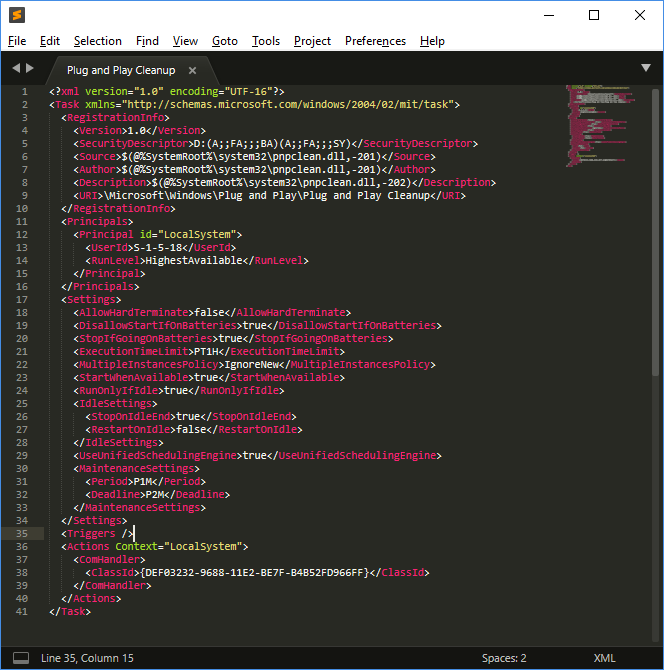In the path \Users\<username>\AppData\Local\Microsoft\Windows\Notifications you can find the database appdb.dat (before Windows anniversary) or wpndatabase.db (after Windows Anniversary).
Inside this SQLite database you can find the Notification table with all the notifications (in xml format) that may contain interesting data.
Timeline is a Windows characteristic that provides chronological history of web pages visited, edited documents, executed applications...
The database resides in the path \Users\<username>\AppData\Local\ConnectedDevicesPlatform\<id>\ActivitiesCache.db
This database can be open with a SQLite tool or with the tool WxTCmd ****which generates 2 files that can be opened with the tool TimeLine Explorer.
Inside the registry NTUSER.DAT in the path Software\Microsoft\Current Version\Search\RecentApps you can subkeys with information about the application executed, last time it was executed, and number of times it was launched.
You can open the SYSTEM file with a registry editor and inside the path SYSTEM\CurrentControlSet\Services\bam\UserSettings\{SID} you can find the information about the applications executed by each user (note the {SID} in the path) and at what time they were executed (the time is inside the Data value of the registry).
This application saves the emails in HTML or text. You can find the emails inside subfolders inside \Users\<username>\AppData\Local\Comms\Unistore\data\3\. The emails are saved with .dat extension.
The metadata of the emails and the contacts can be found inside the EDB database: \Users\<username>\AppData\Local\Comms\UnistoreDB\store.vol
Change the extension of the file from .vol to .edb and you can use the tool ESEDatabaseView to open it. Inside the Message table you can see the emails.
The 'Plug and Play Cleanup' scheduled task is responsible for clearing legacy versions of drivers. It would appear (based upon reports online) that it also picks up drivers which have not been used in 30 days, despite its description stating that "the most current version of each driver package will be kept". As such, removable devices which have not been connected for 30 days may have their drivers removed.
The scheduled task itself is located at ‘C:\Windows\System32\Tasks\Microsoft\Windows\Plug and Play\Plug and Play Cleanup’, and its content is displayed below:
The task references 'pnpclean.dll' which is responsible for performing the cleanup activity additionally we see that the ‘UseUnifiedSchedulingEngine’ field is set to ‘TRUE’ which specifies that the generic task scheduling engine is used to manage the task. The ‘Period’ and ‘Deadline’ values of 'P1M' and 'P2M' within ‘MaintenanceSettings’ instruct Task Scheduler to execute the task once every month during regular Automatic maintenance and if it fails for 2 consecutive months, to start attempting the task during.
This section was copied from here.
The installed applications can be found in \ProgramData\Microsoft\Windows\AppRepository\
This repository has a log with each application installed in the system inside the database StateRepository-Machine.srd.
Inside the Application table of this database it's possible to find the columns: "Application ID", "PackageNumber", and "Display Name". This columns have information about pre-installed and installed applications and it can be found if some applications were uninstalled because the IDs of installed applications should be sequential.
It's also possible to find installed application inside the registry path: Software\Microsoft\Windows\CurrentVersion\Appx\AppxAllUserStore\Applications\
And uninstalled applications in: Software\Microsoft\Windows\CurrentVersion\Appx\AppxAllUserStore\Deleted\
